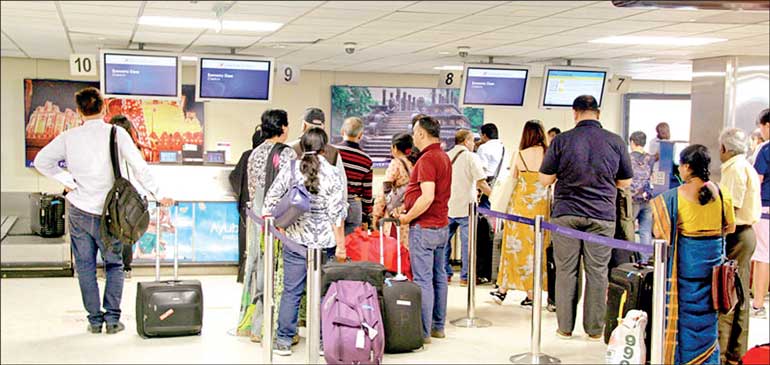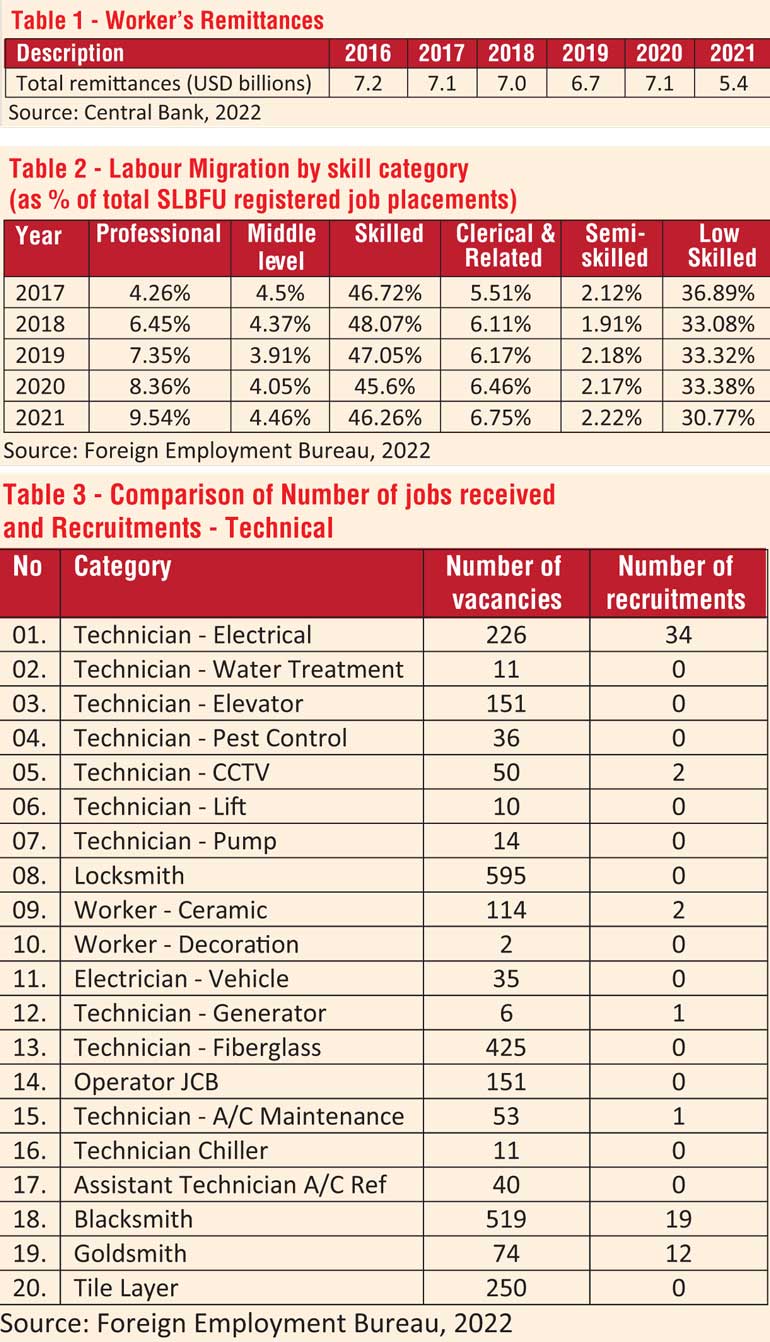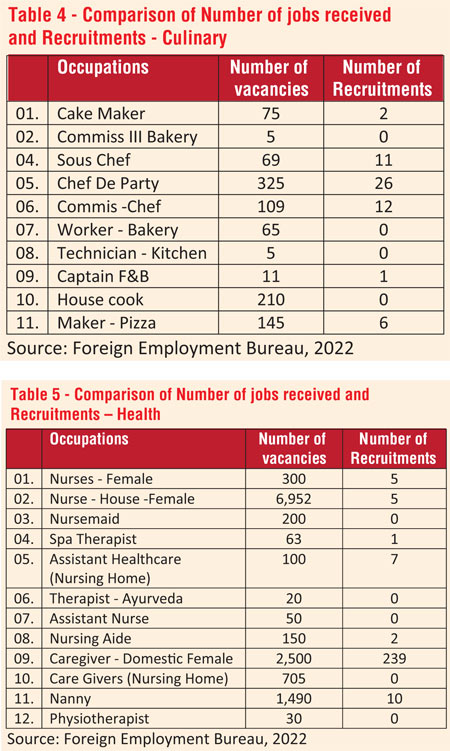Friday Dec 05, 2025
Friday Dec 05, 2025
Friday, 2 December 2022 00:00 - - {{hitsCtrl.values.hits}}



Migrant worker’s remittance is the second largest foreign exchange generating sector for Sri Lanka (Table 1). According to the Sri Lanka Bureau of Foreign Employment (SLBFU), during the past decade, it has been reported around 250,000 Sri Lankans leave the country every year for foreign employment except 2020 and 2021 due to outbreak of the COVID-19 pandemic.
There was a drastic decline in the workers remittances in 2021 as illustrated in the Table 1, due to artificial control of exchange rate, lack of new job placements and repatriation of migrant workers due to the COVID-19 pandemic. Considering the present context of Sri Lanka where the country is suffering from severe forex shortage, it is important to focus on the employment opportunities overseas. In fact, from the beginning of this year, there is a large exodus of migrant workers from Sri Lanka due to economic hardship. However, it is important to examine the percentage of skilled workers, semi-skilled and low skilled workers.
According to Table 2, it is evident that low-skilled labour migration still remained high despite gradual decline from 36.89% in 2017 to 30.77% in 2021. Labour migration in the professional category has also slightly increased from 2017 to 2021. However, the country should focus on sending skilled labour migrants instead of semi-skilled or low-skilled workers.
When we analyse the data compiled by SLBFU, it is evident there is mismatch between the foreign job vacancies received and recruitments. In other words, labour supply is not enough to meet the labour demand for many skilled jobs. In this article, the writer focuses on three sectors (technical, culinary and healthcare) to explain the lack of labour supply for skilled occupations.
 Table 3 amply demonstrates the dearth of skilled workers in the technical field despite the higher demand from foreign countries especially in the Middle East region.
Table 3 amply demonstrates the dearth of skilled workers in the technical field despite the higher demand from foreign countries especially in the Middle East region.
Table 4, illustrates lack of skilled workers for the foreign job opportunities in the culinary field.
In the healthcare sector also there are many foreign employment opportunities especially in the child care/elderly care sectors.
There are many vocational training service providers in Sri Lanka that provide training in above fields which include Vocational Training Authority (VTA), NAITA, National Youth Service Council and several other private sector organisations. Hence, it is worthwhile to examine root-causes of the shortage of labour supply for the aforesaid skilled occupations.
One of the main reasons is lack of awareness among parents and children about the overseas job prospects for many skilled occupations. Many are in the illusion that only white-collar jobs which require university degrees will ensure adequate income. For many years in Sri Lanka, students enter into the universities and then end ups in street protests demanding the Government jobs. It is opportune time to create awareness and attract students for the foreign employment-oriented training courses that produce skilled workers. Another reason is that lack of social recognition/esteem for some skilled occupations which deter students selecting vocational training courses. A recent report by Institute of Policy Studies (2022) point out there are more than half a million three-wheel drivers in the country which is equivalent to around 5% of the labour force. Thus, it is beneficial, if the country can bring at least half of the three-wheel drivers, those who are at the young age to vocational training systems and facilitate them to find skilled occupations overseas.
Researchers have pointed out migrant workers contribute to the development of their home countries not only during their stay overseas by sending remittances. When migrant workers return, they bring new skills, network, and accumulated funds, and with proper entrepreneurial training they can start small businesses contributing to the economic development of the country.
It is high time for the stakeholders to act swiftly, as it is obvious sending skilled migrant workers is one of the short-term solutions to support the economic recovery.
(The writer is a postgraduate qualified socio-economic policy researcher, and can be contacted via [email protected].)